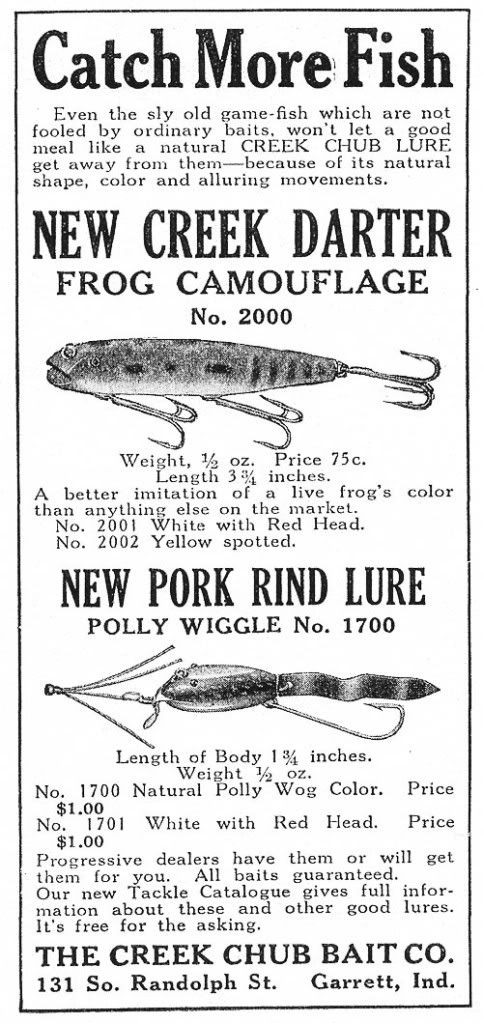The Creek Chub Bait Company's “New Creek Darter” (1923)
by Bill Sonnett

This is another advertisement with much to ponder. It appeared in the July 1923 issue of Forest & Stream, a year before it made its first appearance in a Creek Chub Bait Company catalog in 1924. I was unaware (though it was there all the time in Dr. Smith's book) that this bait was originally called the “Creek Darter” before having its name shortened to the more familiar “Darter.” It is also commonly called by its catalog number the “2000.” No one that I have spoken with has seen the frog color listed, as it is in this advertisement, as “Frog Camouflage.” It is true that this early, light olive green version of the "Frog" coloration strongly resembles a military camouflage paint job rather than the more familiar dark green C.C.B.C. version of its “Frog” pattern.

Growing up, I never saw a C.C.B.C. Darter in any one's tackle box. I do remember reading that it was a favored lure in the deep South and it was prominent in photos of open tackle boxes in articles written about bass fishing by southern writers such as Robert E. Price. Ray Bergman called it an “exceptional killer in the frog finish."
My own experience with the Darter began fifteen years ago fishing with Warren Platt. Warren is not strictly a “one-lure fisherman” but is pretty darn close to it. His weapon of choice is the “2000 Darter” or its shorter cousin the “8000 Midget Darter.” It would never have occurred to me to fish these baits as he does, retrieving them on the surface with a steady twitching motion, making them “walk the dog” in the same fashion as a Zara Spook. The hang-up is that only a small minority of them “walk” in this fashion rather than swim to one side. No one seems to be able to figure out why this is or what adjustments to the bait would correct this condition. I believe Warren has tried about everything. I know there is always a lot of weeping and wailing when a big one makes off with one of his that “works” as it should.
I do not have the patience to fish this bait in this fashion but I will admit (if pressed) it has accounted for several, memorable “Bottom of the Ninth” victories in the other end of the boat. We'll finish today with Warren and one of many Bass that have surrendered to the "Old Frog Darter."

-- Bill Sonnett


